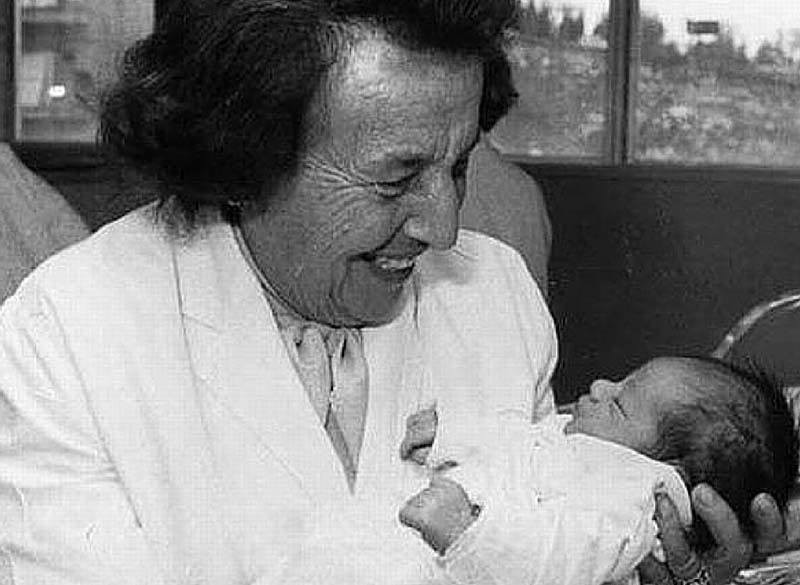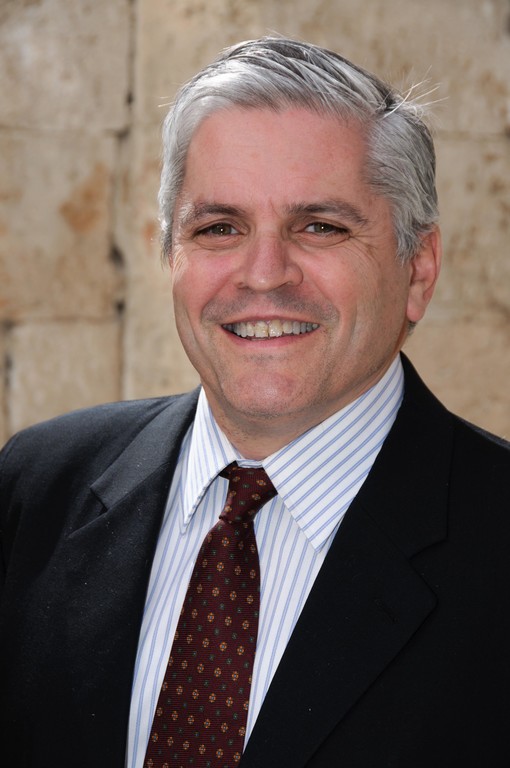It’s not what’s lost, but what’s to be achieved
She was the Other Doctor of Auschwitz and I recently read a story about her in Yitta Halberstam’s small miracles series.
A young woman (we’ll call her Chaya) had just arrived in Auschwitz as a young bride of 19. Forced to suffer the ordeal of Mengele’s infamous selection, she watched her beloved husband taken off in the opposite direction and, having survived, realized he must be gone. Soon, though, amidst the constant fear, hunger and pain, Chaya discovered a small glimmer of hope: she realized she was pregnant, a part of her husband still lived. Her friends in the barracks explained to her that trying to save the baby would only result in her own death as well.
Begging for help, finally someone went to get Dr. Gisella Perl, an obstetrician in Siget (Hungary) before the war and known among the inmates as the Other Doctor of Auschwitz. Quietly, secretly, she moved among the prisoners dispensing medical help and healing wherever possible, and she had helped hundreds of pregnant women in despair in Auschwitz.
When she examined Chaya, she realized she was too far along for a safe abortion and advised her she would have to carry the baby to term. “You will have to hide your pregnancy, and when it is time, I will deliver the baby. And then, I will do what I have to do to save your life.” Averting her eyes, Doctor Perl walked away.
Chaya asked everyone who would listen what Doctor Perl meant by “doing the right thing,” but no one would answer her. Finally one woman could stand it no longer and broke the silence: “As soon as your baby is born Doctor Perl will kill it; it’s the only way.”
By some miracle Chaya managed to hide her pregnancy and some months later went into labor. Doctor Perl took her to the floor of the latrine and helped deliver the baby and through the entire ordeal, Chaya begged her to let the baby live.
Through her tears, Doctor Perl explained how painful it was for her as well, as a doctor, a mother, and a human being. “But if I do not do this they will find this baby and murder it, and you and maybe others along with it; this is the only way to save your life. If the Germans find you with a baby they will torture you both and then murder you horribly. … I survive one day I will dedicate myself to bringing lives back into the world. And if you somehow survive you too will yet merit to bring life into the world.”
And when the baby was born, Doctor Perl did the unthinkable: she took the newborn baby just come into the world and strangled it.
Somehow, Chaya survived the war, and after liberation and two years in a DP camp in Sweden she made it to Borough Park in the early 1950s and began the slow painful process of rebuilding her life. She remarried and eventually got pregnant. Her husband wanted her to see an obstetrician, but she had difficulty making that decision.
One day, she was walking down the street and noticed a sign for an obstetrician, named … Dr. Gizelle Perl. They had lost track of each other and Chaya wondered if she too had somehow managed to survive. So she walked into the office unannounced and there standing behind the nurse’s counter was none other than Dr. Gizelle Perl; she too had survived the war. Doctor Perl felt the stare of someone on her and looked up and slowly her eyes widened in recognition; with a shout she ran out from behind the counter and they hugged until the tears stopped flowing.
Doctor Perl had kept her promise and come to Borough Park, which had one of the largest concentrations of Holocaust survivors in the world, to bring life back into the world. And she immediately confirmed to Chaya that she had not forgotten her promise to one day after the war help deliver her baby.
So once again Dr. Gizelle took Chaya under her wing, only this time not on the floor of a latrine in Auschwitz but in a sterile delivery room at Maimonides Hospital in Brooklyn. And as she delivered the baby she shouted out what would become her trademark line every time she delivered a Jewish baby: “A Life for a Life!”
It is estimated that Dr. Gizelle Perl saved almost 10,000 Jewish women in Auschwitz. But until her death as an unsung heroine 1984, her greatest joy was the babies she delivered in freedom, her act of defiance in a post Holocaust world.
Taking lives and giving them was a fine line in that world of darkness, and there is a detail in the story of this week’s parsha Mattot that makes the point well.
G-d tells Moshe it is time to avenge the wickedness of the Midianites. Recognizing that they would not triumph against the Jewish people on the battlefield, the Midianites, at the behest of Balaam their wicked sorcerer, decided to bring the Jewish people down spiritually. So Midianite women seduced Jewish men in a wicked orgy of idolatry which resulted in a terrible Plague.
Moshe, at the behest of G-d, tells the people to ready 1,000 men from each tribe for the imminent battle against Midian. Rashi points out (Bamidbar 31:4) that this was meant to include the tribe of Levi — even Levites who served in the Temple and were not expected to go to war, would join this battle for the spiritual essence of the Jewish people.
The Torah subsequently tells us that 12,000 men thus went to battle. But if the tribe of Levi also sent 1,000 men then there should have been 13,000 men. And Joseph has two sons who become tribes, Menashe and Ephraim, so there are really 13 tribes. Why were there only 12,000 men?
I saw a great response to this question in a thought quoted by Rav Yochanan Zweig, rosh yeshiva of Yeshivas Beis Moshe Chaim in Miami. The Torah says these 12,000 men were “given over” to the battle (ibid. 31:5). Why were they “given over,” why didn’t they just go to war? Rashi explains that they did not want to go, because G-d told Moshe this was one last task before Moshe would die (ibid. v. 2) and they did not want to lose their great leader.
Moshe had no hesitations about fulfilling this mitzvah, even though he knew it would be his last, because that’s who Moshe was: it was not about the price of the Mitzvah, it was about the privilege. But the Jewish people were still in a different place: they were more focused on what they were going to lose, rather than the opportunity and blessing to be gained.
When Moshe says, “Mi La’Hashem elai?” (“Who wishes purely to serve G-d, let them come forward to join me” (Shemot 32:26), it were Levites who rushed forward. Their essence was not about themselves, it was about what Hashem wanted of them. So even though this was Moshe’s last mitzvah, they approached it like every other opportunity to serve: the bigger picture always came first. Meanwhile, the rest of the Jewish people, consumed by the imminent loss of their leader, focused on what they were about to lose rather than on the opportunity to give themselves over one more time.
This was Moshe’s last lesson to the Jewish people: Who do we want to be? Are we focused on what we lost or on what we have to give?
Incredibly, with the ashes from the Nazis still warm after the Holocaust, the Jewish people, rather than dwelling on their loss, decided they still had something to give to the world, and set about building the State of Israel, and rebuilding the world of Torah that had been lost.
We are in the painful period of the Jewish calendar known as the three weeks, in between when the Roman Legions broke through the walls spelling the end of the Jewish commonwealth, and the ninth of Av when the Temples were destroyed. In the midst of this period of national mourning one cannot help but be inspired by those rare few like Dr. Gisella Perl, who were able, even in the shadow of the chimneys of Auschwitz, to focus not on all that we were losing but on how much we still had to give.
Shabbat Shalom from Jerusalem.

 60.0°,
A Few Clouds
60.0°,
A Few Clouds 







